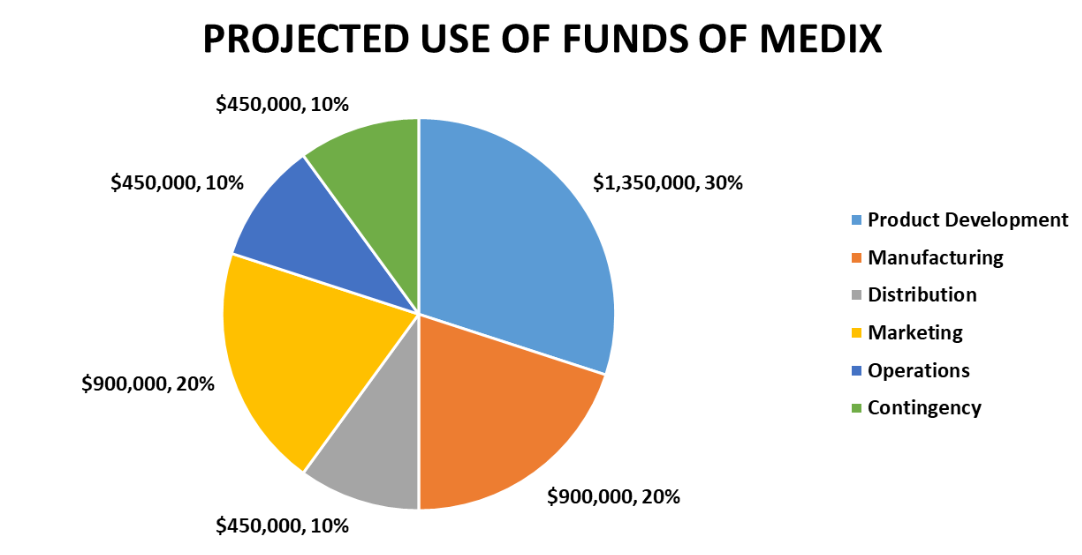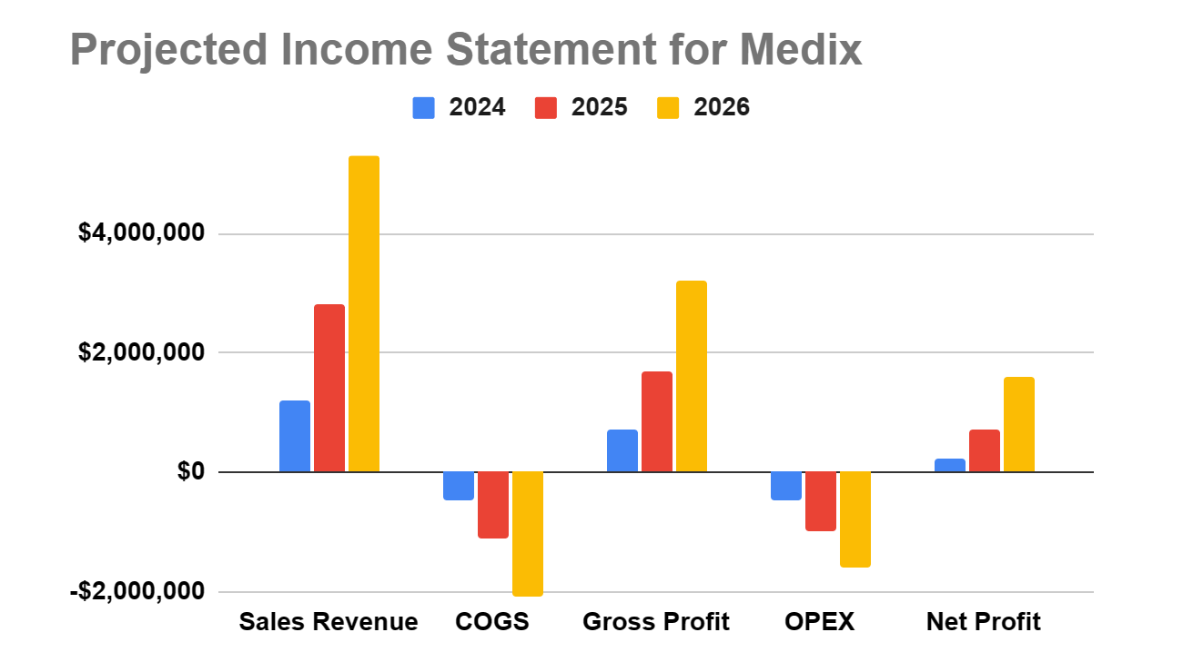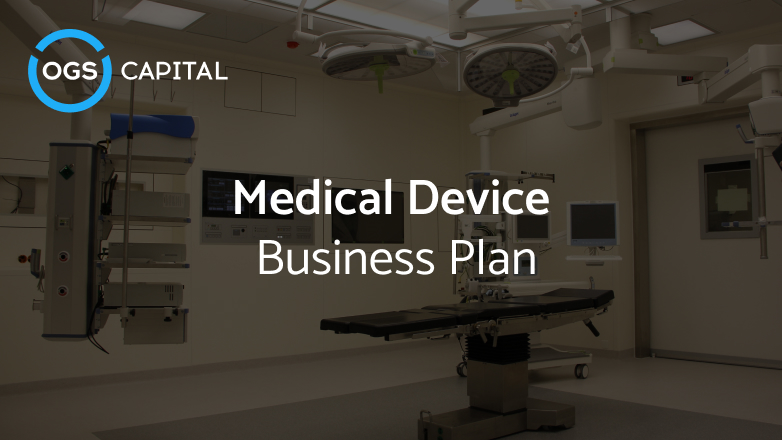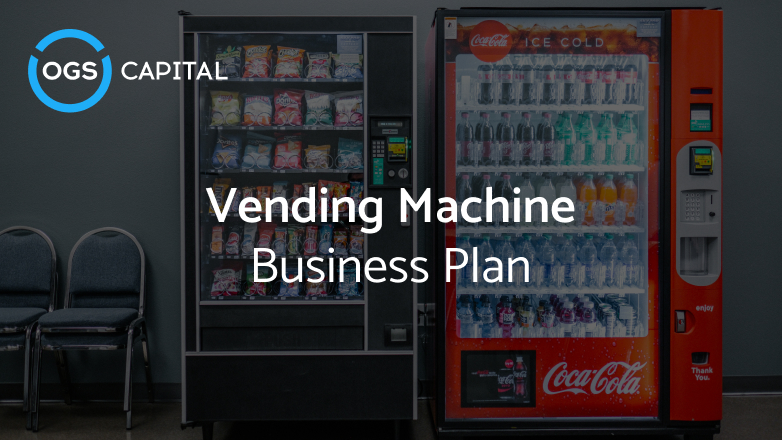Table of Content
Medical Device Business Plan Sample
A medical device business plan is a document that outlines how to start and run a successful company that produces and sells products that diagnose, treat, or prevent diseases or injuries. Navigating the vast and expanding medical device sector presents thrilling opportunities alongside complex hurdles. A well-crafted business plan illuminates the route to success. Articulate your vision, milestones, tactics, and budgetary forecasts.
A business plan should also demonstrate how you will stand out from the crowd, satisfy users, adhere to regulations, and uphold ethical standards. A medical billing business plan is a specific type of medical device business plan that focuses on how to provide billing and coding services for healthcare providers.
In this article, we will provide you with a medical device business plan sample that you can use as a template or a reference for your business plan. We will cover the following sections:
- Executive Summary
- Company Overview
- Industry Analysis
- Customer Analysis
- Competitive Analysis
- Marketing Plan
- Operations Plan
- Management Team
- Financial Plan
Executive Summary Section of Our Medical Device Business Plan
Business Overview
Medix is a medical device company that develops and sells innovative and affordable devices for diabetes management. We aim to enhance the well-being and health results of those managing diabetes. We aim to offer user-friendly and dependable products that assist in tracking and regulating blood sugar levels.
Products and Services
Medix offers two main products:
- Medix Glucometer – A smart glucose meter that connects to a mobile app via Bluetooth and provides accurate and instant readings of blood glucose levels.
- Medix Patch – A wearable patch that continuously measures blood glucose levels through the skin without needing finger pricks or test strips.
Customer Focus
Medix focuses on serving people with diabetes, seeking convenient and affordable solutions to manage their condition. According to the IDF Diabetes Atlas 10th edition report, 537 million adults (20-79 years) live with diabetes – 1 in 10. Experts predict that this number will rise to 643 million by 2030 and 783 million by 2045. Therefore, there is a huge demand for effective and accessible diabetes care products.
Management Team
Leo Clark and Aria Bennett, two experienced entrepreneurs with biomedical engineering and business administration backgrounds, founded Medix. Leo is the CEO and head of product development, while Aria is the COO and head of marketing and sales. A team of qualified engineers, designers, developers, marketers, salespeople, and advisors supports them.
Success Factors
Medix has several competitive advantages that will enable it to succeed in the medical device industry:
- Innovation with cutting-edge technology to create novel devices
- High standards of quality and safety in every aspect of devices
- Customer satisfaction by providing user-friendly devices
- Social impact by addressing a major health problem globally
Financial Highlights
Medix seeks $5 million in seed funding to launch its products and scale its operations. The company projects to generate $1.2 million in revenue in the first year, $3.6 million in the second year, and $10.8 million in the third year, with a gross margin of 60% and a net profit margin of 20%. The company expects to break even in the second year and reach a valuation of $50 million by the end of the third year.
Company Overview Section of Our Medical Device Sales Business Plan

Who is Medix Medical Supply?
Medix dedicates itself to developing and selling innovative, affordable, and reliable devices for diabetes management. Our products help people with diabetes to monitor and control their blood glucose levels with ease and effectiveness, leading to better health outcomes and an improved quality of life.
Medix Medical Supply History
Medix is a company that provides innovative solutions for diabetes care. It was founded by Leo Clark and Aria Bennett in 2023, who both personally experienced the challenges and frustrations of living with diabetes. These challenges included frequent finger pricks, expensive test strips, inaccurate readings, and complicated insulin injections.
They started Medix with their personal funds and an incubator grant to address these issues. Medix developed two products – the Medix Glucometer and the Medix Patch – to make diabetes monitoring and treatment easier, more accurate, and more affordable.
The Medix products have received regulatory approvals from the Food and Drug Administration (FDA) and the European Medicines Agency (EMA). They are now ready for launch in the US and European markets. For more information, please refer to our dentistry business plan.
Legal Structure
Medix, an LLC registered in Delaware, USA, has obtained ownership by Leo Clark (60%) and Aria Bennett (40%). Additionally, the company has applied for a patent for its products in the US Patent and Trademark Office (USPTO).
Industry Analysis Section of Our Medical Device Business Plan
The medical device industry is one of the world’s most innovative and dynamic sectors. Fortune Business Insights reported that the global medical device market was valued at $512.29 billion in 2022 and can grow from $536.12 billion in 2023 to $799.67 billion by 2030, at a CAGR of 5.9%.
The medical device industry is driven by several factors, such as:
- The increasing prevalence of diseases and the aging population
- The rising demand for minimally invasive and personalized treatments
- The advancement of technology and digitalization
- The emergence of new markets and segments
Customer Analysis Section of Our Medical Supply Business Plan
Demographic Profile of Target Market
Medix’s target market is the US market, which ranks third for the highest number of people with diabetes. We target diabetic people looking for convenient, affordable solutions to manage their condition.
According to the National Diabetes Statistics Report by CDC, here are some interesting stats about why the US market is best for Medix:
- 37.3 million people have diabetes (11.3% of the US population)
- 28.7 million people are diagnosed, including 28.5 million adults
- 8.5 million people are undiagnosed (23.0% of adults)
- 96 million people aged 18 years or older have prediabetes (38.0% of the adult US population)
- 26.4 million people aged 65 years or older (48.8%) have prediabetes
The demographic profile of our target market is as follows:
- Age – We target all ages, mainly the young and middle-aged, who are tech-savvy and have more money to spend. A CDC report says 34.1 million adults aged 18 years or older—or 13.0% of all US adults—have diabetes.
- Gender – We target both males and females, as diabetes does not discriminate by gender. A NIDDK (NIH) report says a higher percentage of men (41%) than women (32%) have prediabetes.
- Income – We target all income levels, mainly the low and middle-income who need better healthcare solutions. An NCBI (NIH) report says 80% of the adults worldwide with diabetes live in low- and middle-income countries (LMICs).
Customer Segmentation
Based on our market research and customer feedback, we have identified four main customer segments for our products:
- Segment A – Tech-savvy innovators who value quality, performance, and convenience. They share their views online.
- Segment B – Cost-conscious buyers who seek affordable and effective products. They trust their peers’ recommendations.
- Segment C – Health-conscious improvers who want products that motivate and support them. They join online health communities.
- Segment D – Compliance-driven users need products that ensure safety, security, and simplicity. They depend on their health providers and caregivers.
The table below summarizes our findings:
| Segment | Size (in millions) | Growth Rate (CAGR) |
| A | 46.3 | 18% |
| B | 92.6 | 16% |
| C | 69.5 | 14% |
| D | 46.3 | 12% |
Based on the table, we have decided to target segments A and B as our primary segments, and segments C and D as our secondary segments.
Competitive Analysis Section of Our Medical Equipment Producer Business Plan
Direct and Indirect Competitors
Our direct competitors are other medical device companies that offer similar or substitute surgical medical equipment for diabetes management. Some of the major players in this category are:
1. Abbott – A global healthcare company that offers a range of products for diabetes care with mobile apps for real-time data and insights.
Strengths:
- Strong brand recognition
- Global presence
- Innovation capabilities
- Customer loyalty
Weaknesses:
- High price
- Limited availability
- Technical issues
2. Dexcom – A medical device company specializing in CGMs for diabetes management. These devices use sensors to record and transmit data to a receiver or a smartphone.
Strengths:
- High accuracy
- Reliability
- Convenience
- Customer satisfaction
Weaknesses:
- High cost
- Short sensor lifespan
- Skin irritation
3. Medtronic – A medical technology company that offers a range of durable medical equipment for diabetes care, such as insulin pumps, CGMs, and APSs. The system connects to a mobile app to monitor and control settings.
Strengths:
- Leadership position
- Advanced technology
- Clinical evidence
- Customer support
Weaknesses:
- Complexity
- Safety concerns
- Regulatory hurdles
- Competition
Our indirect competitors are other healthcare providers or solutions that offer alternative or complementary ways to manage diabetes, such as medications, diet plans, exercise programs, coaching services, etc. Refer to our hospital business plan to learn more.
Competitive Advantage
Medix’s unique value proposition and competitive advantage over its competitors are:
- Medix is more innovative
- Medix is more convenient
- Medix is more versatile
- Medix is more affordable
- Medix is more user-friendly
Marketing Plan Section of Our Medical Device Business Plan
Promotions Strategy
We will promote our products using online and offline channels to attract and retain customers. Our promotional mix consists of:
- Advertising – Online platforms (e.g., Google Ads, Facebook Ads) and offline media (e.g., newspapers, billboards) to deliver relevant and engaging messages.
- Public Relations – Press releases, media interviews, podcasts, webinars, etc., to generate positive publicity and exposure. Social media platforms (e.g., Facebook, Twitter) to interact and communicate with customers and stakeholders.
- Sales Promotion – Discounts, coupons, free samples, free trials, referrals, loyalty programs, etc., to stimulate sales and repeat purchases. Contests, sweepstakes, giveaways, etc., to create excitement and buzz.
- Personal Selling – Direct sales, telemarketing, email marketing, etc., to contact and persuade customers to buy our products. Online platforms (e.g., Amazon, eBay, Shopify) to sell our products directly.
Pricing
We will use a value-based pricing strategy that reflects the value and benefits of our products and our competitive advantage. We will also offer competitive pricing that matches or undercuts our competitors’ prices.
We will charge $100 for each Medix Glucometer and $50 for each Medix Patch. We will also generate recurring revenue from the sales of test strips ($0.5 each) and insulin cartridges ($10 each). We estimate that each customer will use an average of 100 test strips and 12 insulin cartridges per year.
Operations Plan Section of Our Medical Device Business Plan
Operation Functions
We do these core activities to offer our products and services to our customers:
- Product Development – We research, design, test, and improve our products using agile methods, customer feedback, market trends, and tools like GitHub, Jira, Figma, etc.
- Manufacturing – We produce our products on a large scale and high quality by outsourcing to a reliable contract manufacturer.
- Distribution – We deliver our products to our customers quickly and cheaply using direct and indirect channels in different regions or countries.
- Customer Service – We support and assist our customers before, during, and after their purchase using various channels and methods.
Milestones and Timeline
We have these specific goals and objectives to track our progress and success in our operation functions:
- June 2024: Complete R&D, testing, prototyping of products
- September 2024: Obtain regulatory approvals and certifications
- December 2024: Launch marketing campaign and product launch in the US
- March 2025: Market research for Europe entry
- December 2025: Launch Europe marketing, market entry
- March 2026: Invest in production capacity
- June 2026: Expand manufacturing workforce
- December 2026: Evaluate production, increase to 100k units/month
Management Team Section of Our Medical Device Business Plan
Founders and Co-founders
Leo Clark, a biomedical engineer with type 1 diabetes, and Aria Bennett, the daughter of a type 2 diabetic and a business administrator, founded Medix. Leo is responsible for the product development function, while Aria leads the marketing and sales function. Both have several years of experience working in their respective fields and personal and professional experience with diabetes.
Other Key Team Members
- Alice Lee – Our chief engineer
- Bob Chen – Our chief developer
- Carol Wang – Our chief designer
- Dave Jones – Our chief marketer
- Emma Smith – Our chief salesperson
Financial Plan Section of Our Medical Device Business Plan
Key Revenue and Costs
Medix’s main sources of revenue, along with pricing, are:
- Medix Glucometer – $100 for each Glucometer
- Medix Patch – $50 for each Patch
- Test Strips – $0.5 for each test strip
- Insulin Cartridge – $10 for each cartridge
We estimate that each customer will use an average of 100 test strips and 12 insulin cartridges per year.
Medix’s main categories of expenses are:
- Cost of Goods Sold (COGS) – Our main cost of goods sold is the cost of materials, components, parts, and additional supplies. We estimate that the COGS per unit is $40 for the Medix Glucometer, $20 for the Medix Patch, $0.1 for the test strip, and $2 for the insulin cartridge.
- Operating Expenses (OPEX) – Our main operating expenses are the costs we incur for running and operating our business, such as salaries, rent, utilities, marketing, advertising, R&D, etc. Our OPEX will be 40% of our revenue in the first year, 35% in the second year, and 30% in the third year.
Funding Requirements and Use of Funds
Funding Requirements – We seek $5 million in seed funding to launch our products and scale our operations. We have already raised $500,000 from our savings and a small grant from a local incubator. We need an additional $4.5 million to cover our expenses for the next 18 months until we reach the break-even point.
Use of Funds – We will use the funds for the following purposes as highlighted in the below chart:

Key Assumptions
- Market size for our products is 10% of the total number of people with diabetes in the US and Europe
- Market share is projected to grow from 107,000 customers in 2024 to 444,000 customers in 2026
- Sales volume is projected to grow from 321,000 units in 2024 to 1.33 million units in 2026
- Gross margin is projected to be 60% in all three years
- Net margin is projected to grow from 20% in 2024 to 30% in 2026
Financial Projections
Based on the above assumptions, we have prepared the following financial projections for the next three years:
Income Statement

OGSCapital – Your Partner for Medical Device Startup Success
With over a decade of experience, at OGSCapital, we have helped various entrepreneurs craft winning business plans. Our consultants provide end-to-end support – from market research and competitor analysis to realistic profitability forecasts. We understand the medical device industry inside-out, including regulations, manufacturing, and distribution.
Whether you need help with your hospital feasibility study, medical equipment manufacturing business plan, or medical supply store business plan, we tailor our approach to your specific product and goals. Partner with us to launch your startup on the path to profitability and rapid growth.
Frequently Asked Questions
How to start a medical device business?
A strategic business plan is a key ingredient in a startup medical device company. But that alone won’t cut it – the company also requires a talented group of professionals, structured product development procedures, a plan for meeting regulatory guidelines, and effective marketing tactics. A distributor or a medical equipment supplier can help distribute the devices.
How profitable are medical devices?
The medical equipment industry is booming with high growth potential. The average operating margin for medical equipment and supplies companies averages 2.87%. The medical device market will grow at a CAGR of 5.5% to 5.9% from 2022 to 2030.
How do I market my medical device?
As highlighted in our Medical Clinic Business Plan, some popular marketing channels to market a medical device include online platforms, social media, trade shows, conferences, webinars, publications, referrals, and testimonials. A medical equipment rental company can also help market the device.
OGSCapital’s team has assisted thousands of entrepreneurs with top-rate business plan development, consultancy and analysis. They’ve helped thousands of SME owners secure more than $1.5 billion in funding, and they can do the same for you.



















